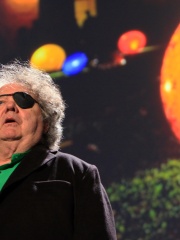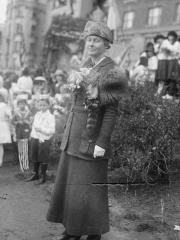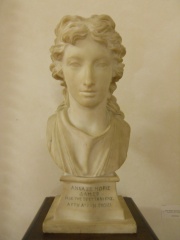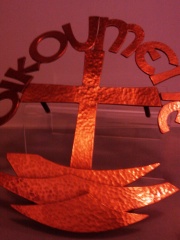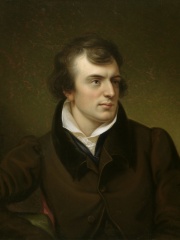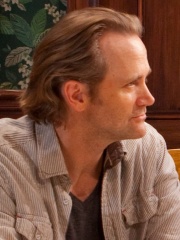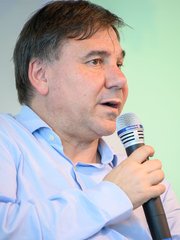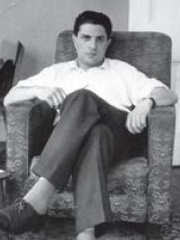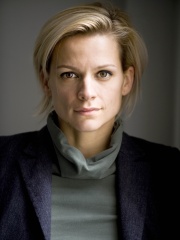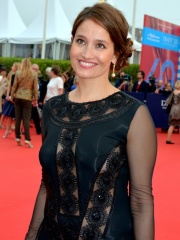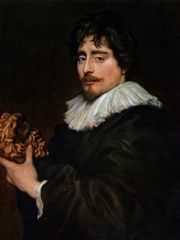SCULPTOR
Wim Delvoye
1965 - Today

 Wim Delvoye
Wim Delvoye
Wim Delvoye (born 1965 in Wervik, West Flanders) is a Belgian installation artist and sculptor. Read more on Wikipedia
His biography is available in 14 different languages on Wikipedia. Wim Delvoye is the 249th most popular sculptor, the 838th most popular biography from Belgium and the 3rd most popular Belgian Sculptor.
Wim Delvoye is a Belgian neo-conceptual artist most famous for his provocative sculptures that often blend art with technology, such as his intricate designs of tattooed pigs and elaborate industrial installations. His work challenges traditional notions of art and craftsmanship, often exploring themes of consumerism and the relationship between art and industry.
Memorability Metrics
Page views of Wim Delvoye by language
Among SCULPTORS
Among sculptors, Wim Delvoye ranks 249 out of 258. Before him are Mikhail Anikushin, Augusta Savage, Dale Chihuly, Anna Hyatt Huntington, Megumi Igarashi, and Anne Seymour Damer. After him are Ronald Pope, Ruth Asawa, Rebeca Matte Bello, Augustus Saint-Gaudens, Horatio Greenough, and Juan Garaizabal.
Most Popular Sculptors in Wikipedia
Go to all RankingsMikhail Anikushin
1917 - 1997
HPI: 51.73
Rank: 243
Augusta Savage
1892 - 1962
HPI: 51.49
Rank: 244
Dale Chihuly
1941 - Present
HPI: 51.44
Rank: 245
Anna Hyatt Huntington
1876 - 1973
HPI: 50.94
Rank: 246
Megumi Igarashi
1972 - Present
HPI: 50.82
Rank: 247
Anne Seymour Damer
1748 - 1828
HPI: 50.37
Rank: 248
Wim Delvoye
1965 - Present
HPI: 50.36
Rank: 249
Ronald Pope
1920 - 1997
HPI: 50.14
Rank: 250
Ruth Asawa
1926 - 2013
HPI: 49.88
Rank: 251
Rebeca Matte Bello
1875 - 1929
HPI: 49.46
Rank: 252
Augustus Saint-Gaudens
1848 - 1907
HPI: 49.37
Rank: 253
Horatio Greenough
1805 - 1852
HPI: 49.02
Rank: 254
Juan Garaizabal
1971 - Present
HPI: 46.79
Rank: 255
Contemporaries
Among people born in 1965, Wim Delvoye ranks 517. Before him are Sonique, Rei Sakuma, Lee Tergesen, Poul-Erik Høyer Larsen, Fran Escribá, and Ivan Krastev. After him are Maria Pitillo, Choi Dae-shik, Esa Tikkanen, Etsuko Handa, Jessica Steen, and Tracy Letts.
Others Born in 1965
Go to all RankingsSonique
SINGER
1965 - Present
HPI: 50.42
Rank: 511
Rei Sakuma
ACTOR
1965 - Present
HPI: 50.40
Rank: 512
Lee Tergesen
ACTOR
1965 - Present
HPI: 50.39
Rank: 513
Poul-Erik Høyer Larsen
ATHLETE
1965 - Present
HPI: 50.37
Rank: 514
Fran Escribá
COACH
1965 - Present
HPI: 50.37
Rank: 515
Ivan Krastev
POLITICAL SCIENTIST
1965 - Present
HPI: 50.37
Rank: 516
Wim Delvoye
SCULPTOR
1965 - Present
HPI: 50.36
Rank: 517
Maria Pitillo
ACTOR
1965 - Present
HPI: 50.36
Rank: 518
Choi Dae-shik
SOCCER PLAYER
1965 - 2024
HPI: 50.36
Rank: 519
Esa Tikkanen
HOCKEY PLAYER
1965 - Present
HPI: 50.34
Rank: 520
Etsuko Handa
SOCCER PLAYER
1965 - Present
HPI: 50.32
Rank: 521
Jessica Steen
ACTOR
1965 - Present
HPI: 50.31
Rank: 522
Tracy Letts
ACTOR
1965 - Present
HPI: 50.30
Rank: 523
In Belgium
Among people born in Belgium, Wim Delvoye ranks 838 out of 1,190. Before him are Luc Luycx (1958), Danny Boffin (1965), Nacer Chadli (1989), Kevin Mirallas (1987), André Milhoux (1928), and Ralph Miliband (1924). After him are Veerle Baetens (1978), Johan Walem (1972), Jean Claessens (1908), Patrick Ouchène (1966), Marie Gillain (1975), and Charles De Ketelaere (2001).
Others born in Belgium
Go to all RankingsLuc Luycx
DESIGNER
1958 - Present
HPI: 50.56
Rank: 832
Danny Boffin
SOCCER PLAYER
1965 - Present
HPI: 50.52
Rank: 833
Nacer Chadli
SOCCER PLAYER
1989 - Present
HPI: 50.51
Rank: 834
Kevin Mirallas
SOCCER PLAYER
1987 - Present
HPI: 50.48
Rank: 835
André Milhoux
RACING DRIVER
1928 - Present
HPI: 50.46
Rank: 836
Ralph Miliband
SOCIOLOGIST
1924 - 1994
HPI: 50.44
Rank: 837
Wim Delvoye
SCULPTOR
1965 - Present
HPI: 50.36
Rank: 838
Veerle Baetens
ACTOR
1978 - Present
HPI: 50.28
Rank: 839
Johan Walem
SOCCER PLAYER
1972 - Present
HPI: 50.26
Rank: 840
Jean Claessens
SOCCER PLAYER
1908 - 1978
HPI: 50.21
Rank: 841
Patrick Ouchène
SINGER
1966 - Present
HPI: 50.18
Rank: 842
Marie Gillain
ACTOR
1975 - Present
HPI: 50.13
Rank: 843
Charles De Ketelaere
SOCCER PLAYER
2001 - Present
HPI: 50.09
Rank: 844
Among SCULPTORS In Belgium
Among sculptors born in Belgium, Wim Delvoye ranks 3. Before him are François Duquesnoy (1597), and George Minne (1866).
François Duquesnoy
1597 - 1643
HPI: 63.35
Rank: 1
George Minne
1866 - 1941
HPI: 59.78
Rank: 2
Wim Delvoye
1965 - Present
HPI: 50.36
Rank: 3


